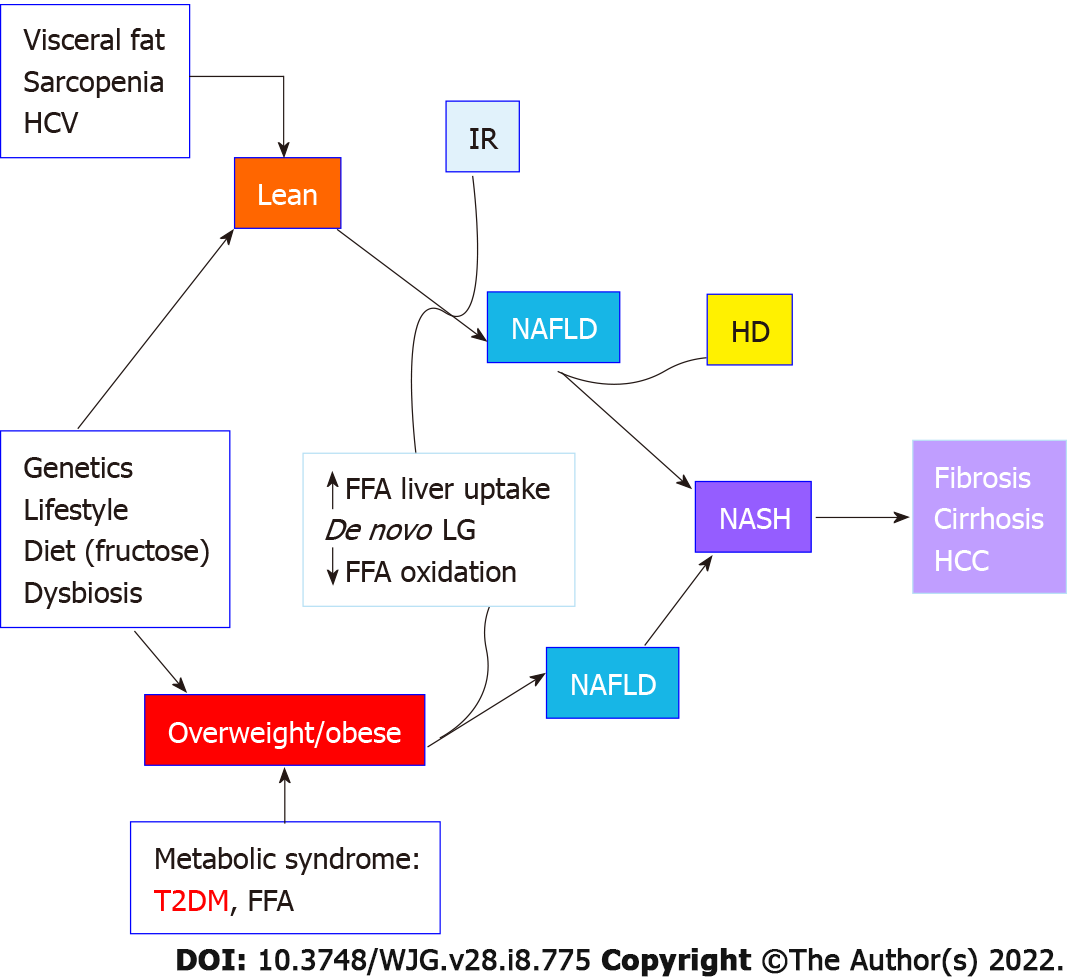Copyright
©The Author(s) 2022.
World J Gastroenterol. Feb 28, 2022; 28(8): 775-793
Published online Feb 28, 2022. doi: 10.3748/wjg.v28.i8.775
Published online Feb 28, 2022. doi: 10.3748/wjg.v28.i8.775
Figure 2 The pathophysiological relationship between diabetes mellitus and nonalcoholic fatty liver disease.
This is bidirectional: On the one hand, type 2 diabetes mellitus (T2DM) is a strong risk factor (alone or as part of metabolic syndrome) for nonalcoholic fatty liver disease (NAFLD), liver cirrhosis and hepatocellular carcinoma. On the other hand, NAFLD in the absence of metabolic disorders is a risk factor for incidental DM as it has been demonstrated in lean subjects with NAFLD. In both cases genetics, [PNPLA3 rs738409 polymorphism (G allele), SREBF-2 rs133291 C/T polymorphism, TM6SF2 rs58542926 C>T and CETP rs12447924 and rs1259700 polymorfisms], as well as sedentary life style, diet and dysbiosis may also play an important role. HCV: Hepatitis C virus; IR: Insulin resistance; NAFLD: Nonalcoholic fatty liver disease; HD: Hepatogenous diabetes; FFA: Free fatty acids; LG: Lactoglobulin; T2DM: Type 2 diabetes mellitus; NASH: Non-alcoholic steatohepatitis; HCC: Hepatocellular carcinoma.
- Citation: García-Compeán D, Orsi E, Kumar R, Gundling F, Nishida T, Villarreal-Pérez JZ, Del Cueto-Aguilera ÁN, González-González JA, Pugliese G. Clinical implications of diabetes in chronic liver disease: Diagnosis, outcomes and management, current and future perspectives. World J Gastroenterol 2022; 28(8): 775-793
- URL: https://www.wjgnet.com/1007-9327/full/v28/i8/775.htm
- DOI: https://dx.doi.org/10.3748/wjg.v28.i8.775









